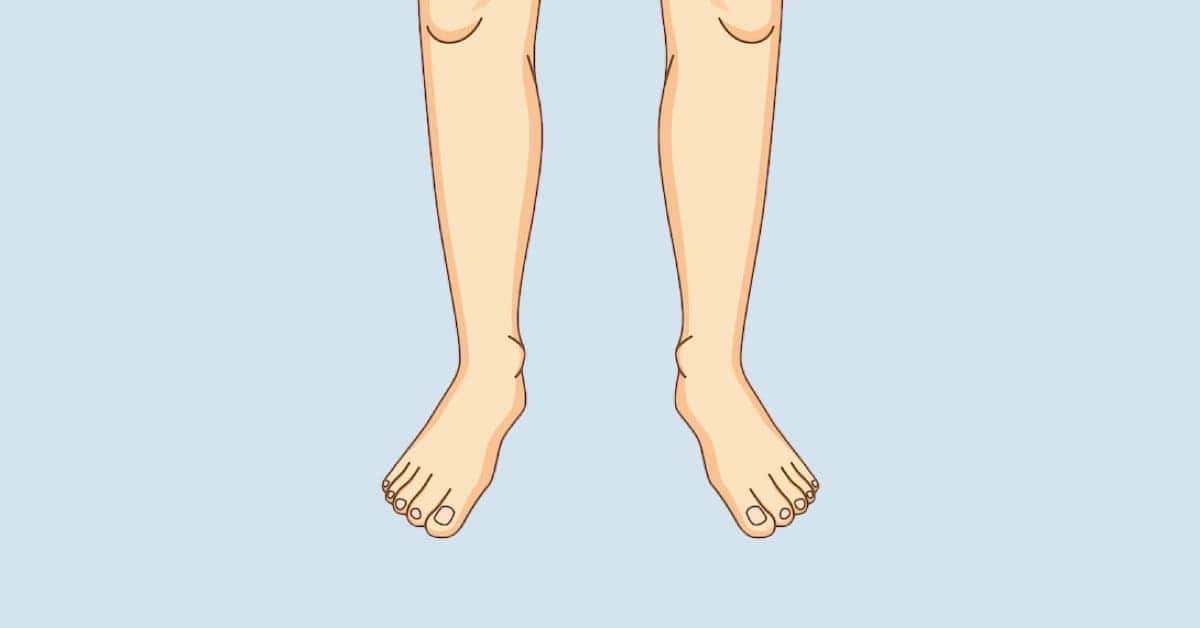Ankle dorsiflexion plays a vital role in maintaining optimal mobility and avoiding discomfort in daily life. Despite its importance, it’s often overlooked until a problem arises.
Whether you’re an occasional gym-goer, an office worker, or even someone who enjoys a daily walk, keeping your ankles flexible and strong is key to maintaining balance, preventing injuries, and improving your performance in various physical activities.
This article will guide you through understanding the mechanics of ankle dorsiflexion, why it’s essential, and how you can enhance it through simple exercises and stretches that you can perform at home.
I. Understanding Ankle Dorsiflexion
Ankle dorsiflexion is the ability to move your foot upwards towards your shin. This movement is distinct from plantar flexion, which involves pointing your toes away from your body, as if pressing on a gas pedal.
Ankle dorsiflexion involves a coordinated effort between your tibia (shin bone) and your talus (ankle bone), along with various muscles and ligaments. It’s an essential aspect of many physical activities, helping to propel your body forward and maintain balance.
However, when this movement is limited, it can subtly impact your daily activities. It might modify your natural walking pattern, leading to compensatory movement patterns that could increase the risk of knee or hip injuries.
II. Causes of Limited Ankle Dorsiflexion
Limited ankle dorsiflexion is often caused by tightness in the calf muscles and Achilles tendon, both of which play a significant role in the movements of the ankle. When these areas become tight, they can restrict the ankle’s range of motion.
Alongside muscle and tendon tightness, a lack of overall ankle mobility can also contribute to limited dorsiflexion. Past injuries or surgeries in the area may have a lasting impact on your ankle’s flexibility, reducing its range and ability for dorsiflexion.
III. Testing Your Ankle Dorsiflexion
To start improving your ankle dorsiflexion, it’s helpful first to understand your current range of motion. You can do this with a straightforward knee-to-wall test at home.
- Begin facing a wall and place your toes about 4-5 inches from it.
- Attempt to touch your knee to the wall without lifting your heel off the floor.
- If your knee touches the wall easily, move your foot further back and repeat.
- Your current ankle dorsiflexion range is the point at which your knee barely touches the wall without your heel lifting off the ground.
Regarding what to look for, if your knee can’t reach the wall from a 4-5 inches distance without lifting the heel, it indicates limited ankle dorsiflexion. Conversely, if your knee can reach or even surpass this distance, it suggests a good level of dorsiflexion.
This test provides a useful benchmark for your ankle mobility, guiding you on your journey towards improved dorsiflexion.
IV. Approaching the Fix: Massages, Stretches, and Mobility Drills
To improve your ankle dorsiflexion, we suggest a well-rounded approach that addresses the problem from different angles. Here, we’ll cover three key strategies:
- Self Massage: Massage and self-myofascial release work wonders in loosening tight muscles and tendons around your calf and ankle, enhancing your ankle’s mobility. With easily accessible tools like foam rollers or massage balls, you can directly target these areas to alleviate tension.
- Stretches: Regular stretching of the muscles and tendons involved in dorsiflexion can incrementally increase your ankle’s range of motion. The forthcoming stretches are simple and can be conveniently done at home with minimum equipment.
- Mobility Drills: These exercises aim to improve the overall movement of your ankle, increasing its ability for dorsiflexion. Incorporating these drills into your routine can help to boost both flexibility and strength.
By integrating these three components – massages, stretches, and mobility drills – you’re adopting a comprehensive and effective strategy for enhancing your ankle dorsiflexion. It’s important to note, however, that consistency is the key to seeing results. Every step you take towards better mobility is a positive stride forward.
V. Massage Techniques for Ankle Dorsiflexion Improvement
Before jumping into mobility exercises, let’s first address the tightness that might limit your ankle’s movement. With some targeted massages, you can relax these areas and prepare them for the upcoming stretches and exercises.
Calf massage
Applying pressure on your calf muscles with a foam roller or a ball helps to relieve tightness that may be restricting your ankle dorsiflexion.
- Start by placing a foam roller under your calf.
- Apply pressure and slowly roll it along the length of your calf.
- When you find a spot that feels particularly tight, pause and hold for a few seconds.
- Repeat this process for about a minute or two.
- You can substitute the foam roller with a massage ball if you need something more intense.
Achilles tendon massage
Like your calf muscles, your Achilles tendon can also contribute to limited dorsiflexion when tight.
- Sit with one leg stretched out in front of you.
- Place a ball under your Achilles tendon. It’s just above the back of your ankle.
- Apply pressure and roll the ball up and down your Achilles tendon.
- Hold and press for a few seconds when you find a tight spot.
- Continue for about a minute or two.
Plantar fascia massage
Massaging the bottom of your foot can improve your ankle dorsiflexion due to the connection between the plantar fascia and the Achilles tendon.
- Sit with one foot resting on a golf ball.
- Apply pressure and roll the ball under your foot.
- When you find a tender spot, pause and press into it.
- Continue for about a minute or two.
VI. Stretching Exercises to Improve Ankle Dorsiflexion
Now that we’ve eased some tension in your muscles and tendons let’s move on to stretches. These are designed to improve the flexibility of the muscles and tendons involved in dorsiflexion, ultimately helping to increase your ankle’s range of motion.
Achilles stretch
This stretch targets your Achilles tendon and can be performed using a chair.
- Stand in front of a chair, placing one foot on it while keeping the other foot on the floor.
- Slowly lean forward, keeping your heel on the chair.
- Hold the stretch for at least 30 seconds.
- Repeat on the other side.
Knee-to-wall stretch
The knee-to-wall stretch is a great way to work on your dorsiflexion.
- Stand facing a wall with your toes a few inches away from it.
- Try to touch your knee to the wall without lifting your heel.
- Hold the stretch for at least 30 seconds.
- Repeat on the other side.
- If your knee can touch the wall easily, move your foot back to make it more challenging.
Calf wall stretch
- Stand facing a wall in a lunge position.
- Place your hands on the wall and push into it.
- Keep your back heel on the ground and your back leg straight.
- Hold the stretch for at least 30 seconds.
- Repeat on the other side.
Step calf stretch
- Stand on a step with the front part of your feet on the step and your heels hanging off the edge, touching the ground.
- Keep your legs straight and feel the stretch in your calf muscles.
- Hold this stretch for at least 30 seconds.
- Repeat on the other side.
Calf hang stretch
This variation of the calf stretch on a step allows for a different angle and an intensified stretch.
- Stand on a step with the front part of your feet on the step, this time letting your heel hang off the edge without touching the ground.
- Put all your weight on the front part of your feet and feel a deep stretch in your calves.
- Hold this position for at least 30 seconds.
- Repeat on the other side.
Banded dorsiflexion stretch
This stretch uses a band or towel to assist in stretching the calf muscles and improving ankle dorsiflexion.
- Sit with your leg stretched out in front of you.
- Wrap a band or towel around the ball of your foot and hold both ends.
- Gently pull the band or towel towards you while keeping your leg straight.
- Hold this position for at least 30 seconds.
- Repeat on the other side.
VII. Mobility Drills for Ankle Dorsiflexion
Now that we have massaged the muscles and stretched them, it’s time to enhance the movement and strength of your ankle with mobility drills. These exercises will help to further promote improved dorsiflexion by challenging your range of motion under different loads and angles.
Lunging stretch
- Stand with one foot in front and one foot behind you in a split stance.
- Bend both knees to lower your body into a lunge while keeping both knees planted.
- Push through your front heel to return to the starting position.
- Perform this movement for 10-15 repetitions before switching to the other side.
Kneeling split squat
- Start in a kneeling position, then step one foot out in front of you.
- Keep your front foot flat on the floor and your knee aligned over your ankle.
- Shift your weight forward, allowing your knee to move past your toes while keeping your heel planted on the ground. You can also place a weight or kettlebell on your knee to increase the intensity.
- Push back to the starting position.
- Repeat this movement for 10-15 repetitions before switching to the other side.
Three-way lunge
Adding a twist to your regular lunge, the three-way ankle dorsiflexion lunge targets multiple aspects of your ankle mobility. Here’s how to do it:
- Begin in a standing position, placing your right foot forward. Make sure your heel is firmly on the ground, or you can use a raised surface for added challenge.
- Start by lunging straight forward, bending your right knee while keeping your left leg straight. Try to move your knee directly over your toes for optimal stretch.
- Return to the starting position. Now, take a lunge at a 45-degree angle to the right.
- Go back to the starting position. For the third part of the lunge, veer off at a 45-degree angle to the left.
- Complete these three lunges as one repetition and aim for ten repetitions on each leg.
Ankle flexion with band
This drill utilises a band to challenge your ankle’s mobility and encourage dorsiflexion. It also strengthens the tibialis anterior muscle (on the front of the shin), which is often weak in people with limited dorsiflexion.
- Secure a resistance band around a sturdy object and the other end around your foot, pulling your foot into plantar flexion.
- Apply force to move your foot into dorsiflexion against the band’s pull.
- Repeat this movement for 10-15 repetitions before switching to the other side.
Conclusion
Improving ankle dorsiflexion isn’t an overnight process, but with consistent effort, these massage techniques, stretches, and mobility drills can make a significant difference over time. Regular practice is key to enhancing your ankle mobility, and improving your walking, running, and overall movement efficiency in your favourite sports or activities.
Remember that progress might not be immediate, and listening to your body is important. If you’re experiencing severe pain or these exercises do not appear to improve your dorsiflexion, don’t hesitate to seek professional advice. Physiotherapists and other medical professionals can provide tailored advice and treatment plans to address your specific needs.
























